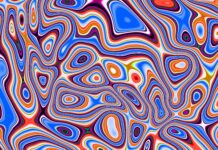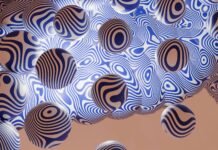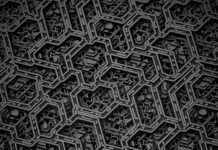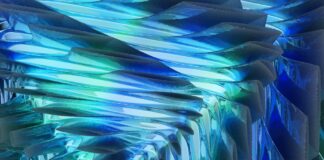In recent years, the fashion industry has embraced innovation at an incredible pace, and one of the most transformative forces has been artificial intelligence. Understanding how AI will change the fashion show production is no longer optional—it’s essential for designers, producers, and brands that want to remain competitive. From automating stage design to enhancing audience engagement, AI is reshaping the runway in ways that were unimaginable just a decade ago. Whether you are an industry insider or an aspiring fashion enthusiast, knowing how AI will change the fashion show production will help you stay ahead of trends, adapt your strategies, and create memorable experiences. As technology advances, the possibilities for how AI will change the fashion show production will only continue to grow, making now the perfect time to explore its impact in depth.
1. AI-Powered Stage and Set Design
Fashion show sets are critical in creating a brand’s visual identity and mood. Traditionally, stage and set design required weeks of manual planning and physical mockups. With AI, designers can create 3D virtual models of stage layouts within hours, testing various lighting arrangements, backdrops, and spatial designs without the need for costly physical prototypes. Machine learning algorithms can analyze past shows to identify which stage setups maximized audience engagement and sales conversions. The result is a highly efficient, visually stunning stage that not only meets but exceeds creative expectations.
2. Intelligent Lighting and Sound Coordination
Lighting and sound are crucial elements that set the tone for a fashion show. AI systems can now control lighting effects in real time, adjusting brightness, colors, and spotlight movements based on the model’s position or the garment being showcased. Soundtracks can be synchronized automatically with runway sequences, ensuring every moment feels polished and cohesive. This not only saves time during rehearsals but also ensures precision during the live event.
3. Automated Model Casting and Scheduling
Selecting the right models for a show has always been a labor-intensive process. AI can scan vast databases of model profiles, portfolios, and runway histories to find the perfect fit for a brand’s aesthetic. It can also factor in diversity goals, target audience preferences, and even predictive trend analytics to ensure a model lineup that resonates. Once chosen, AI scheduling tools can manage rehearsal times, fittings, and appearance orders, dramatically reducing logistical headaches.
4. Enhanced Garment Visualization Through AI
Before the first model steps on stage, AI can generate hyper-realistic virtual simulations of each garment in motion. This allows designers to test how fabrics will flow, how patterns will catch light, and how colors will appear from different angles. Such simulations save time on alterations, prevent last-minute mishaps, and help the creative team finalize their vision before the big day.
5. Real-Time Audience Engagement Analytics
One of AI’s most exciting contributions to fashion show production is the ability to analyze audience reactions in real time. Cameras equipped with emotion recognition software can track audience engagement levels, noting moments of excitement, surprise, or applause. This data helps brands understand which designs or segments generate the strongest responses, guiding future creative decisions.
Fashion show sets are critical in creating a brand’s visual identity and mood. Traditionally, stage and set design required weeks of manual planning and physical mockups. With AI, designers can create 3D virtual models of stage layouts within hours, testing various lighting arrangements, backdrops, and spatial designs without the need for costly physical prototypes. Machine learning algorithms can analyze past shows to identify which stage setups maximized audience engagement and sales conversions. The result is a highly efficient, visually stunning stage that not only meets but exceeds creative expectations.
6. AI-Assisted Choreography and Model Movements
Choreographing a fashion show involves intricate planning to ensure smooth transitions, timing accuracy, and visual appeal. AI tools can simulate model walk patterns, predict collision risks, and recommend alternative arrangements for optimal flow. This ensures that every step on the runway contributes to the show’s overall impact.
Fashion show sets are critical in creating a brand’s visual identity and mood. Traditionally, stage and set design required weeks of manual planning and physical mockups. With AI, designers can create 3D virtual models of stage layouts within hours, testing various lighting arrangements, backdrops, and spatial designs without the need for costly physical prototypes. Machine learning algorithms can analyze past shows to identify which stage setups maximized audience engagement and sales conversions. The result is a highly efficient, visually stunning stage that not only meets but exceeds creative expectations.
7. Personalized Live Streaming Experiences
As digital viewership becomes increasingly important, AI can tailor live-streamed fashion shows for remote audiences. This might mean switching camera angles based on viewer preferences, offering real-time product details, or even enabling virtual “front row” seats. By creating a personalized viewing experience, brands can engage audiences globally, extending the reach of their shows far beyond the physical venue.
8. Predictive Trend Analysis for Show Themes
AI trend forecasting tools can analyze millions of social media posts, e-commerce transactions, and cultural events to predict upcoming fashion trends. This information allows designers to incorporate fresh, relevant ideas into their shows, ensuring that their collections align with what consumers are about to crave. In turn, the production can be themed around these insights, making the show more impactful.
9. Sustainable and Cost-Efficient Production Planning
AI can help reduce waste and costs by optimizing resource allocation for fashion show production. From calculating the exact amount of fabric needed for stage drapes to predicting audience turnout for catering purposes, AI streamlines planning. It can also recommend eco-friendly materials and suppliers, aligning the event with sustainability goals.
10. Post-Show Data-Driven Improvements
After the runway lights go down, AI continues to provide value through post-event analysis. Data from social media engagement, online sales spikes, and audience surveys can be processed to identify the most effective elements of the show. Brands can use this feedback to improve future productions, refining everything from stage design to choreography.
Fashion show sets are critical in creating a brand’s visual identity and mood. Traditionally, stage and set design required weeks of manual planning and physical mockups. With AI, designers can create 3D virtual models of stage layouts within hours, testing various lighting arrangements, backdrops, and spatial designs without the need for costly physical prototypes. Machine learning algorithms can analyze past shows to identify which stage setups maximized audience engagement and sales conversions. The result is a highly efficient, visually stunning stage that not only meets but exceeds creative expectations.
Conclusion
The integration of AI into fashion show production is not just a trend—it’s a revolution that is reshaping the industry from the ground up. From concept to execution, AI offers tools that make events more efficient, engaging, and innovative. For anyone working in fashion, understanding these technological advancements is crucial to staying ahead. The brands that embrace these changes will be the ones defining the future of the runway.














